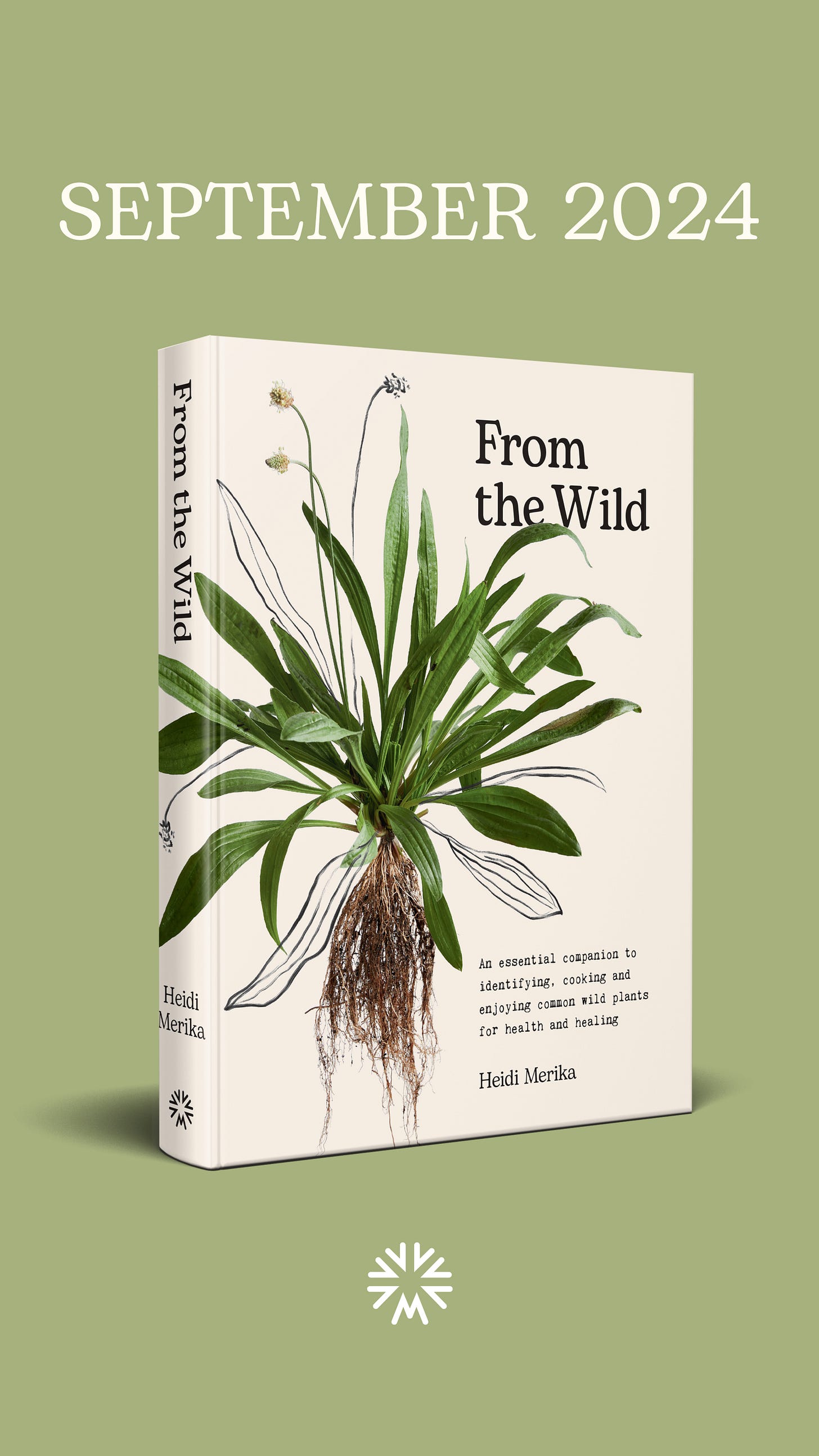Nettle Identification
New book From the Wild out September 3rd

The joy of Nettles
It’s spring and that means Nettles are back! The first time I found wild nettles they were infused with a golden light filled with joy and that joy filled me. Every since, even though I have not experienced anything quite as profound, I’ve always feel so happy when I find nettles. This happiness runs deep and I believe comes from either a past life or ancestral recognition stored in our DNA especially if we are of European descent but can be found in any nationality. Our humanity knows nettles and I think this sense of joy and knowing is shared by many of us. I’m so excited to share nettles with you this month.
Nettle Plant ID
How to identify it
Nettles are erect, upright plants, most easily identified by the small stinging hairs of silica that cover the leaves and stems.
Tall nettle (Urtica dioica) is perennial and can grow to 100 cm or more. It is
tall in the summer and dies off in winter, except in Queensland, where it can grow throughout winter.
Nettle has opposite ovate leaves, with strongly serrated margins, a heart-
shaped base, and a tip that tapers to a point. The tip is longer than the serrations on the sides of the leaves.
It has numerous green to brown flowers in dense axillary inflorescences, with male and female flowers found on separate plants.
It has widely spreading yellow rhizomes, stolons and roots.
English or dwarf nettle (Urtica urens) differs from U. dioica in the following ways:
It is annual, rather than perennial.
It is a smaller plant (10-50 cm).
Stem is upright with branches and four sides and covered in stinging hairs.
Leaves are 2-4 cm.
Male and female flowers are found on the same plant. The flower spikes are
short and stumpy.
It has a milder sting.
The leaves are more deeply toothed and a similar size as the side teeth.
Scrub nettle (Urtica incisa) is similar to U. dioica, being both perennial and
growing up to 1 m or more. It can have large leaves up to 10 cm long and,
like U. dioica, it has male and female flowers on separate plants.
How to harvest
Leaves
Make sure you wear gloves when harvesting nettles. But if you don’t have them, your best chance to not get stung is to put your fingers on the underside of the leaf (which doesn’t have stinging hairs), fold it in on itself and pinch it off. If you are cautious, it works. Generally though, wear gloves and use a pair of scissors or secateurs to cut nettle. Cutting the top 5-10 cm off the stems allows the lower stems to continue growing.
Seeds
Nettle flowers and goes to seed in the warmth of late spring and early summer. You can check if it’s ready to collect seeds by shaking the flower heads and seeing if seeds fall into your hand. If they do it’s ready to harvest. Cut the flower heads and gently shake and massage them over a large bowl. There are often little insects so be careful not to harm them, so they can return to their work in the garden. Butterflies breed on nettles. You can also hang the seed heads upside down with a bag wrapped around them for a few days.
Roots
If you have a large enough population of nettles to harvest roots while ensuring there are enough to regrow, you can dig up the whole plant to obtain the roots as well. A small gardening trowel is generally enough to dig them out. Roots are best harvested either before or after flowering when there is more energy, nutrition and phytochemicals in them.
The From the Wild lands in bookshops on September 3rd (Next Tuesday!!) and will be available at all good bookshops. You can pre-order on my website.
If you would like to pick up a signed copy I’ll be at A little shop of Soul in Cooroy next Wednesday at 11am following my weed walk in the Cooroy Gardens (1 spot left!)
What’s happening on The Wild World Substack
For paid subscribers for the rest of 2024 I will be sharing The Wildcraft Series where we study one plant in depth over 4 weeks, looking at how to identify it, it’s herbal monograph (folklore, historical use, scientific use, indications and cautions) as well as recipes and how it can be used in everyday life.
The Wild World with Heidi Merika is a reader-supported publication. To receive new posts and support my work, consider becoming a free or paid subscriber.
Subscribed
Upcoming courses and events
I have updated my website with lots upcoming events starting on the 3rd of September when From the Wild comes out. If you would like to join me to make an anti-inflammatory gel (Noosa Library), do a weed walk (Cooroy Community Gardens) followed by a book signing at Little Shop of Soul in Cooroy, talk about using weeds as food and medicine and in agriculture (Kandanga Farm Store, Agvention 2024), make an anti-inflammatory gel (Inspired Festival,Canberra), or have wine and vegetarian canapes inspired by From the Wild designed by head chef Cameorn Matthews using Falls Farm produce (Hinterland Writers Festival @ Mapleton Public House) then check out the all the details here.
I would like to acknowledge the Kabbi Kabbi/Gubbi Gubbi peoples on who’s lands I live and work. I acknowledge that sovereignty was never ceded and pray this truth be acknowledged and respected by all who live, work and govern these lands.






Funny to read "it's spring" because it's fall where I am. LOL